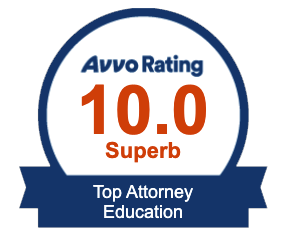In the last post, I discussed the affect of the Endrew F. decision and why you should use this decision at the next annual IEP meeting. In sum, the Endrew F. decision held that a child with a disability that is not fully integrated in regular classes should not be bound by the de minimus or trivial benefit standard. In other words, an IEP developed by the school system should demonstrate the child is making more than de minimus or trivial progress on his IEP goals and objectives. The new standard – which will be further developed by the lower courts – requires that a school system must offer an IEP reasonably calculated to enable a child to make progress appropriate in light of the child’s circumstances. The focus is on the unique needs of the child and his individualized circumstances.
As IEP season is closing and the end of the school year is near, parents should request at the annual IEP meeting that the school system develop an annual IEP for their child so that he will make progress appropriate in light of the child’s circumstances. This means writing annual IEP goals and objectives that are more challenging instead of lowering expectations for the child. How often how you seen a school system write the same or very similar IEP goals and objectives for a child each year? This shows the school system has set low expectations for the child’s educational progress. Instead, the school system should be developing annual IEP goals and objectives for the child that show he is making educational progress. For example, parents should continue to challenge educators to develop behavioral goals and objectives and/or a behavior intervention plan that shows real and concrete progress toward reducing or eliminating his difficult behaviors. If the child is physically aggressive toward adults and peers, then the annual IEP goal and objective on this area should show the child will act appropriately toward adults and peers. A reduction in physically aggression is implicit in this goal. An IEP goal that reduces physical aggression toward adults and peers from five times to one time per week, for instance, may meet the new standard. Unless a child’s behavior improves, it is very unlikely he will make educational progress and be placed in the least restrictive environment. A child’s physical aggression is perhaps the most significant reason why the child is placed in self-contained classes. Parents should expect the school system to reduce their child’s physical aggression toward adults and peers so that he can benefit educationally and be placed in less restrictive classes such as resource classes once or twice a day instead of most or the entire school day.
There are many more examples of how parents can advocate for better annual IEP goals and objectives for their child using the Endrew F. new standard. Instead of “behavior,” you can insert the word “academic,” “fine motor control,” “social skills,” “communication skills,” and “vocational skills” among many others to set higher standards for your child’s progress each school year. The days of lower expectations for a child with a disability that is not fully integrated in regular classes is over. The Supreme Court in Endrew F. focused on the unique needs of the each child to determine his progress. As parents, you will know what are the unique needs of your child and set higher expectations for your child’s progress on his IEP goals and objectives at the annual IEP meeting. For more information about the Endrew F. decision and how you can use this decision at the next annual IEP meeting, see www.wrightslaw.com/nltr/17/al.0323.endrew.douglas.scotus.htm#sthash.oS4pxUqd.dpuf and http://www.copaa.org/news/336815/USSC-Affirms-Promise-of-the-IDEA-in-Endrew-F.-Decision.htm.

